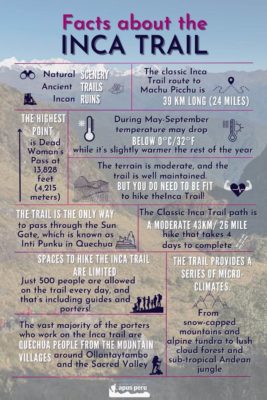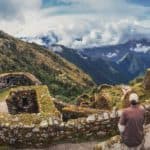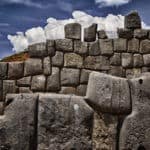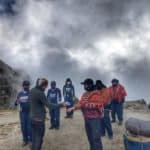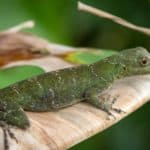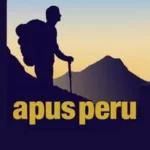Are you looking for an once-in-a-lifetime experience, full of adventure, incredible landscapes, rich history, and personal triumph? Then hiking the Inca Trail to Machu Picchu in Peru may be just what the doctor ordered! Let’s take a quick look these awesome Inca Trail Facts and learn why it is an unforgettable experience!
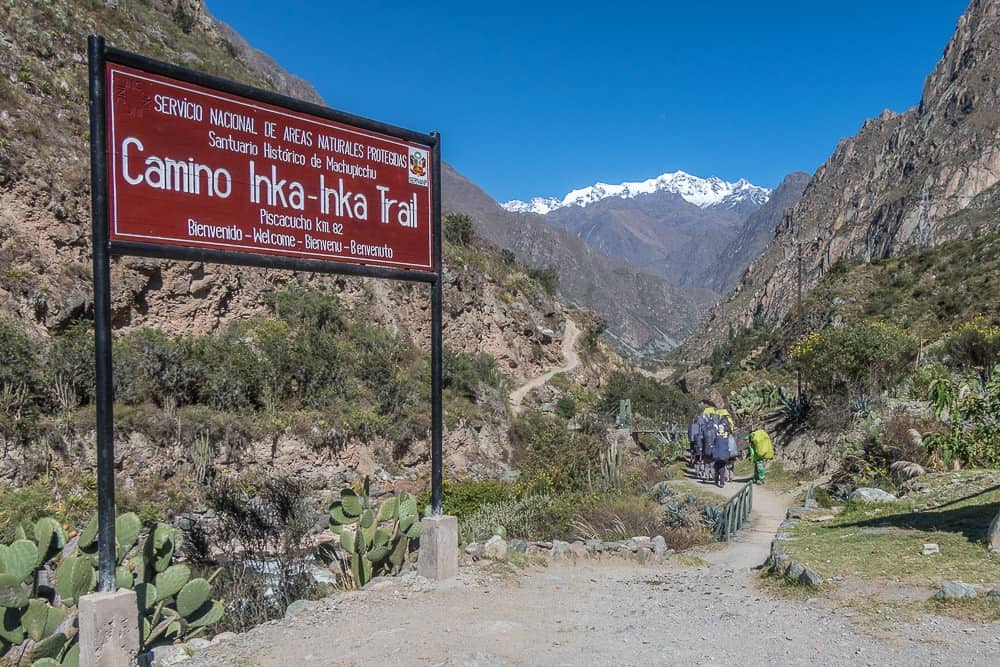
Why is the Inca Trail famous?
The Inca Trail is without a doubt one of the most famous places in Peru. You will often hear the Inca Trail described as the “world’s greatest hike” because it combines the best of both worlds: a four-to-five day walk to the spectacular lost city of Machu Picchu that winds through the zone where the snow-capped Andes Mountains crash into the lush high jungle of the Amazon basin. Combine the incredible natural scenery with the historical power of hiking along an ancient trail, and visiting a number of incomparable Incan ruins along the way. All up, this is without a doubt what makes the Inca Trail one of the world’s best hikes!
Sign up for our Inca Trail newsletter and get all the info!
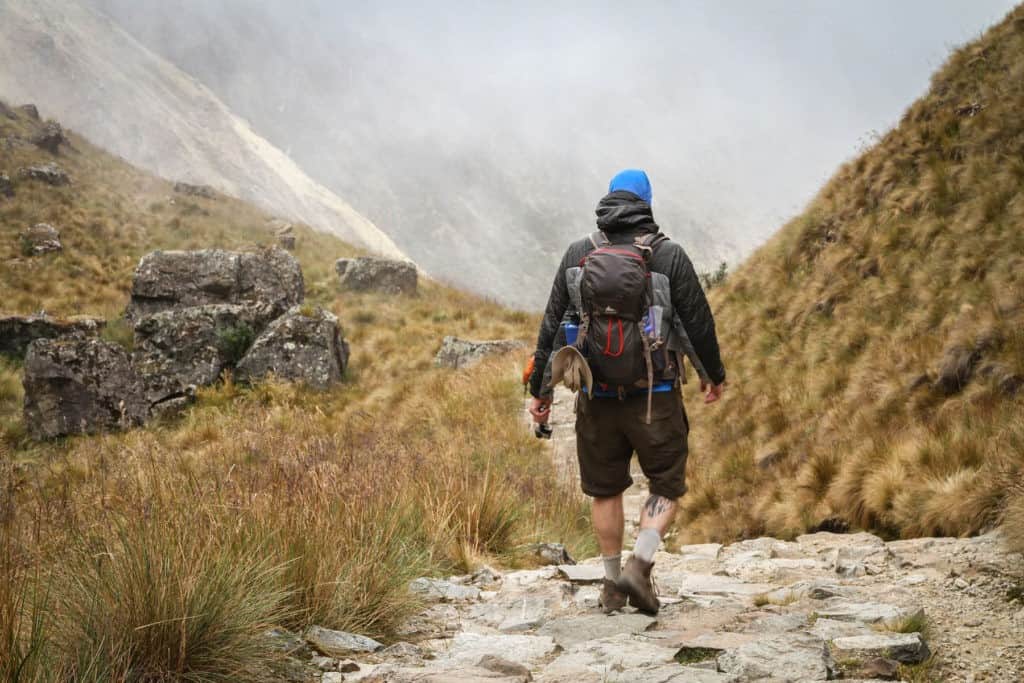
How long is the Inca Trail?
The classic Inca trail route to Machu Picchu is 39 km long (24 miles) and typically takes 4 days to complete. Most people find that doing these 39 kilometres over 3 days (with the fourth day just a short hike to Machu Picchu) is sufficiently difficult, even if they have done some training prior to their trek! Most people can only do this a small amount of distance on the Inca trail each day due to the steepness and the high mountain air. IN fact, you can also do an Inca Trail in 5 days which allows for more time to enjoy the truly sublime scenery.
But… if you are in a hurry to do the Inca trail, you could do the Inca Trail Marathon, considered as one of the most difficult marathons in the world. With climbs and descents of great extremes, the Inca trail Marathon is estimated to be as difficult as running nearly two tough marathons in a row! (Seriously!)
It’s hard to find accurate Inca trail facts, but I believe that the record time for an Inca trail marathon was set by a local porter at 3 hours and 23 minutes. Foreigners have done it in over 5 hours!!!
How high does the Inca Trail reach?
Trekkers reach the highest point at Dead Woman’s Pass at 13,828 feet (4,215 meters).). By comparison, Whistler’s peak is a mere 2184m and even the majestic El Capitan in Yosemite National Park is just 2307m. For those that do the Inca Trail they can be very proud of summiting such a high altitude pass!
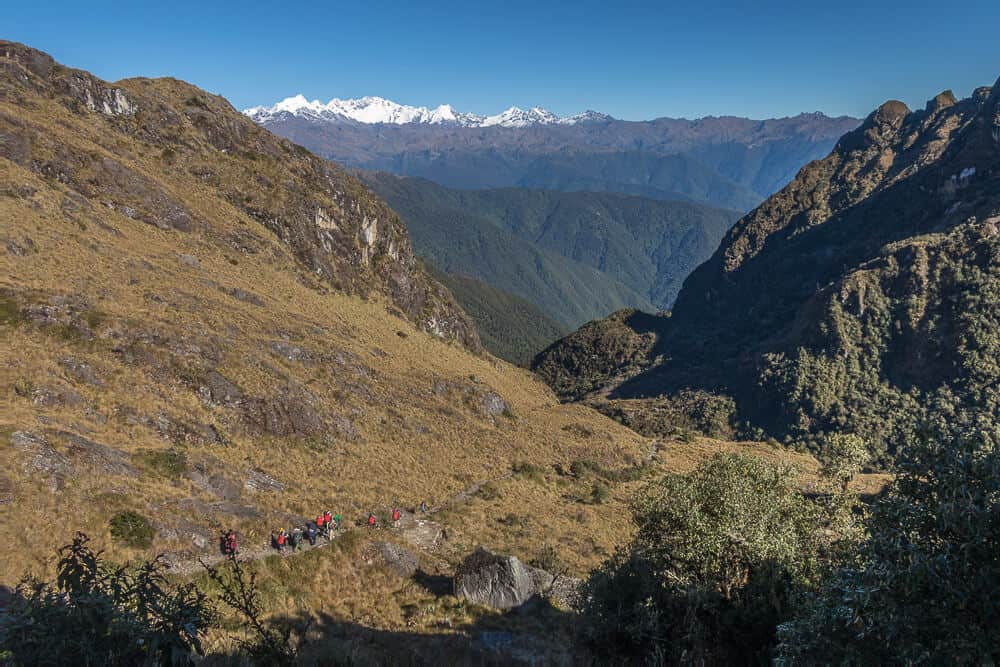
Why is it called Dead Woman’s Pass?
The Quechua name for the highest point on the Inca Trail is Abra Warmiwanusca– literally Dead Woman’s Pass It is called the Dead Woman’s Pass because when viewed from the valley below it looks like a woman’s supine body.
You can rest assure that many trekkers have thought that the name applies to them, as quite literally they feel like dead woman (or man!) as they reach the top of the pass!!!
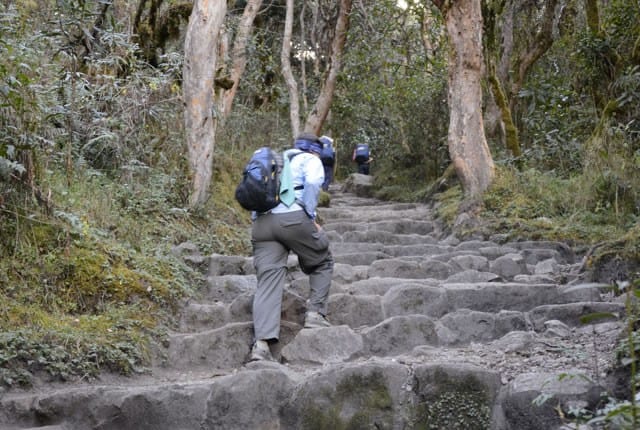
How many stairs are there on the Inca trail?
Thinking about the enormous climb up Dead Woman’s Pass, and it makes me think STEPS!!! I’ll admit, I haven’t counted them, and did nothing more rigorous than google how many steps on the Inca trail – apparently there are 70,866 of them!
From Wayllabamba Campsite 3,010 m/9, 8750 ft. to Dead Woman’s Pass at 13,828 feet (4,215 meters) it is a 1205 metre altitude gain in just a few hours hiking. Sooooo… if each step is half a metre, that’s got to be over 2000 steps!!! If you actually know this Inca trail fact, please drop me a line in the comments!
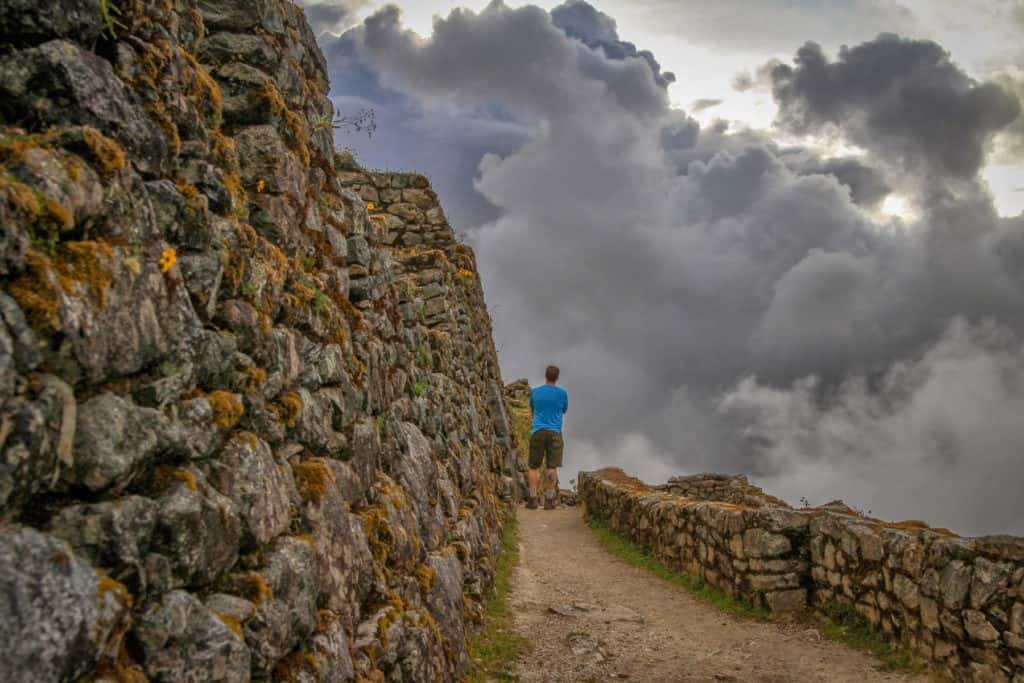
How cold can it get on the Inca Trail?
As high altitude temperatures can change quickly and radically. It can get pretty cold during the nights during the Inca trail trek. In winter (May-September) temperature may drop below 0°C/32°F, while it’s slightly warmer (and wetter) during the rest of the year.
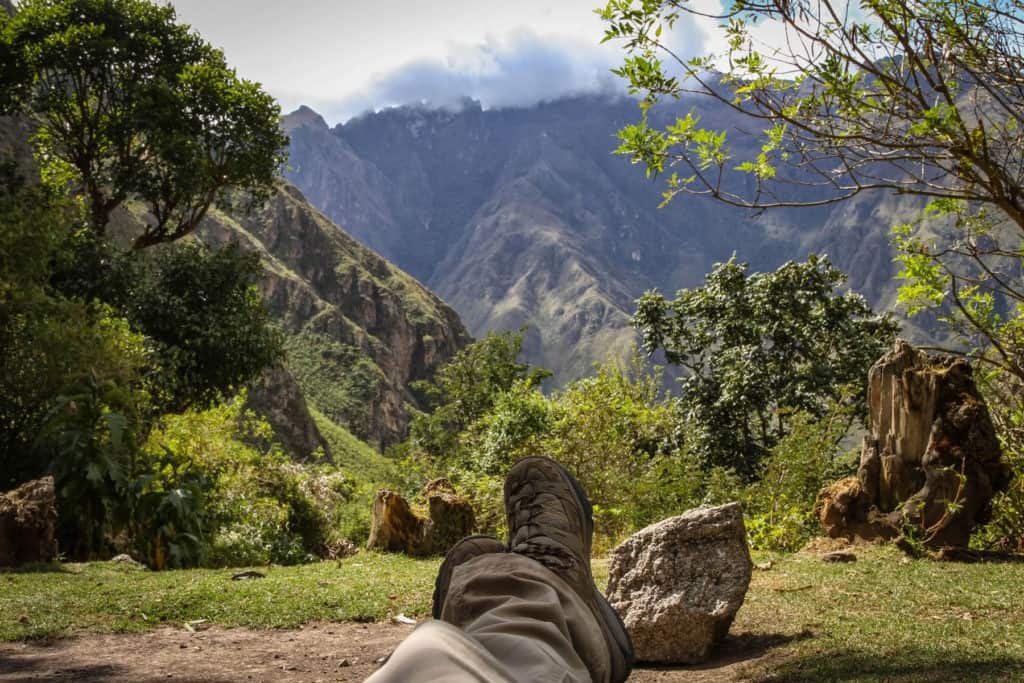
Is the Inca Trail dangerous?
By mountain hiking standards, the Inca trail is not dangerous. The terrain is moderate, and the trail well maintained. There is no need for special ropes, harnesses or technical training. But – You do need to be fit to hike the Inca Trail!
There are of course risks associated with any high altitude activity, as we’ve mentioned early, the hike does reach 13,828 feet (4,215 meters).
The rainy season in Peru brings risks to all mountain routes, due to landslides and rocks falling above. There have been few deaths on the Inca trail which occurred during extremely wet conditions in January. This is the reason why the Inca trail is closed in February.
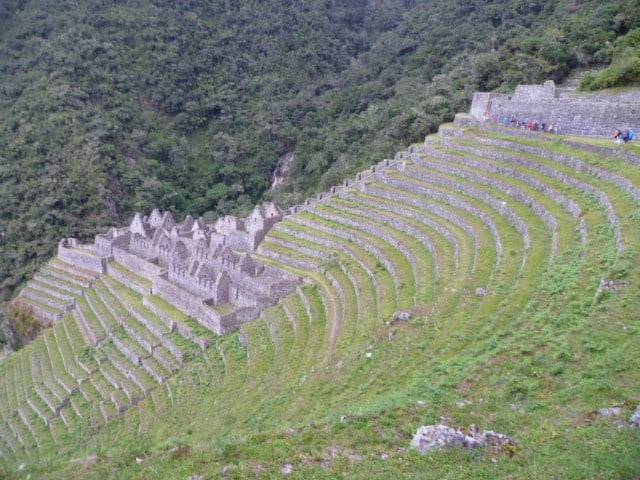
What is the history of the Inca Trail?
If you are looking for Inca trail facts, then the history of the Inca trail is fascinating. The story of the Inca Trail to Machu Picchu begins more than 500 years ago, during the height of the Incan Empire. During that time, the Incas built an enormous network of trails that connected their entire empire, from Ecuador and Colombia through Peru and down into Chile, even crossing parts of Argentina, Bolivia and Brazil. We’re talking an incredible feat of engineering: the roads covered an estimated distance of between 23,000 km and 45,000 km! The entire Qhapaq Ñan is referred to Royal Road – and that includes the famous 43km referred to today as “The Inca Trail.”
Was the Inca trail a royal road?
An Inca trail fact sometimes mentioned is that the Inca Trail was a royal road. As we have pointed out below, the entire Qhapaq Nan is the “Royal Road”. Where this fact may have come from is that it is believed that the Inca Trail to Machu Picchu was part of the Qhapaq Nan, and was used solely for religious pilgrimages. The religious aspect – and the fact this mean only a small number of Incan elite could use the road, is why it has taken on an aura of ‘specialness’. There are a number of theories as to the purpose of Machu Picchu, but whether it was a religious site or a Incan vacation resort, it is generally agreed that the only the Inca, the royal emperor, was allowed on this portion of the trail, as he travelled to the sacred site of Machu Picchu.
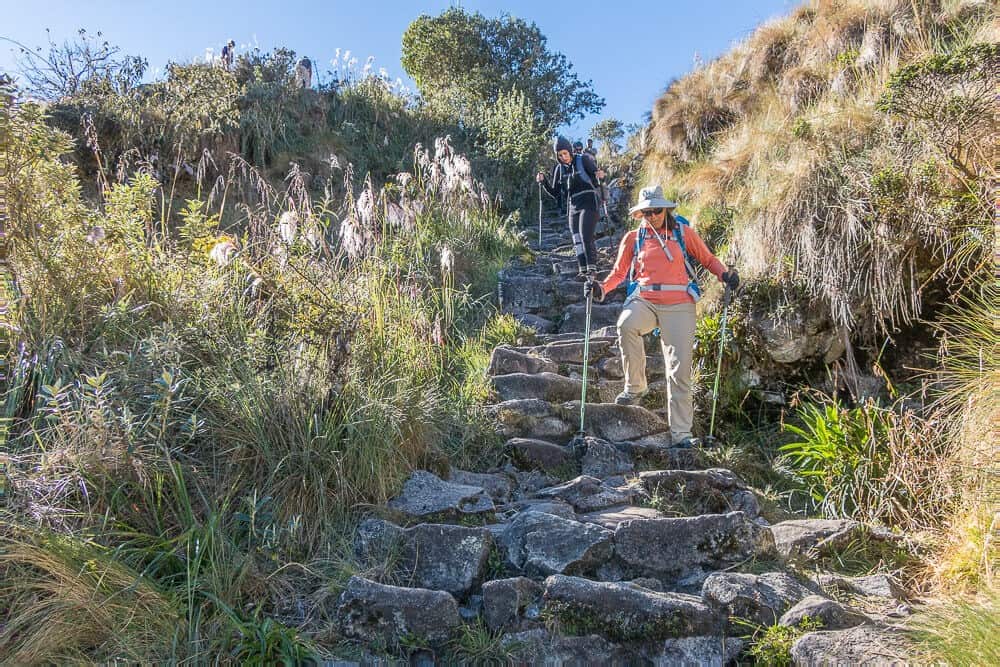
Who rediscovered the Inca trail?
The actual Inca Trail to Machu Picchu was re-discovered by Hiram Bingham when he realised his clearing work and investigations between 1912 and 1915, after the ‘discovery’ of Machu Picchu in 1911. There are different sites between Ollantaytambo and Machu Picchu where you can note the variety of architectural resources that give importance and mysticism to this Royal Road. The purpose of the Inca Trail was religious and ceremonial, a pilgrimage that included rituals to honour the mountains and peaks of the route, like Veronica or Wakaywilka.
Modern day explorer Johan Reinhard hiked the Inca Trail several times during the 1980s and is most famous for having discovered several Inca mummies believed to have been sacrificed to the gods, thus furthering our understanding of how the Inca trail was used.
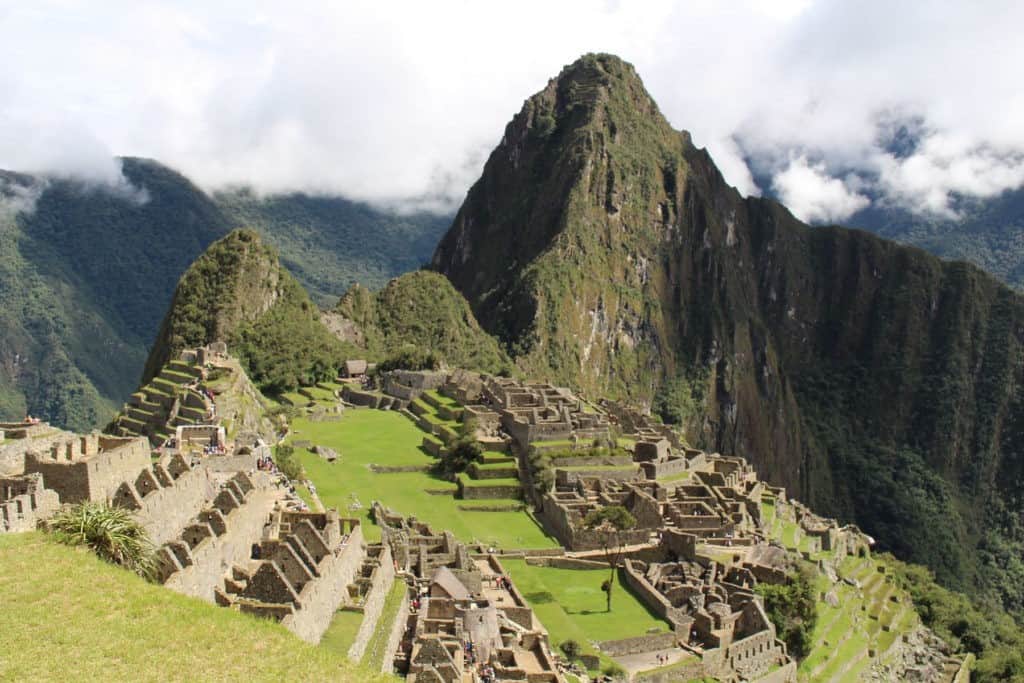
Why did Incas leave Machu Picchu?
As mentioned above there are various theories as to what the purpose of Machu Picchu was, though there is less conjecture that the Inca Trail route was a ceremonial pilgrimage for the Incas. It’s believed that Machu Picchu was abandoned or had fallen out of use just before or around 1531 when the Spanish explorer Francisco Pizarro and his brothers arrived in what is now Peru for their conquest.
One of the reasons the Spanish were able to decisively and quickly conquer the Inca Empire was that they were already sufficiently weakened by smallpox, brought by earlier Spanish forays into the Incan empire – it is known that the Inca ruler Huayna Capac lost his life to smallpox, leaving his succession in disarray. This caused a civil war between two half-brothers – one based in Quito, the other in Cusco. It is quite possible that Machu Picchu was abandoned quite simply because as a place of leisure it could not be maintained while the state was in crisis. The upshot was that the Spanish never found out about Machu Picchu, despite leading a number of military campaigns right past it in their final conquest of the Incas!
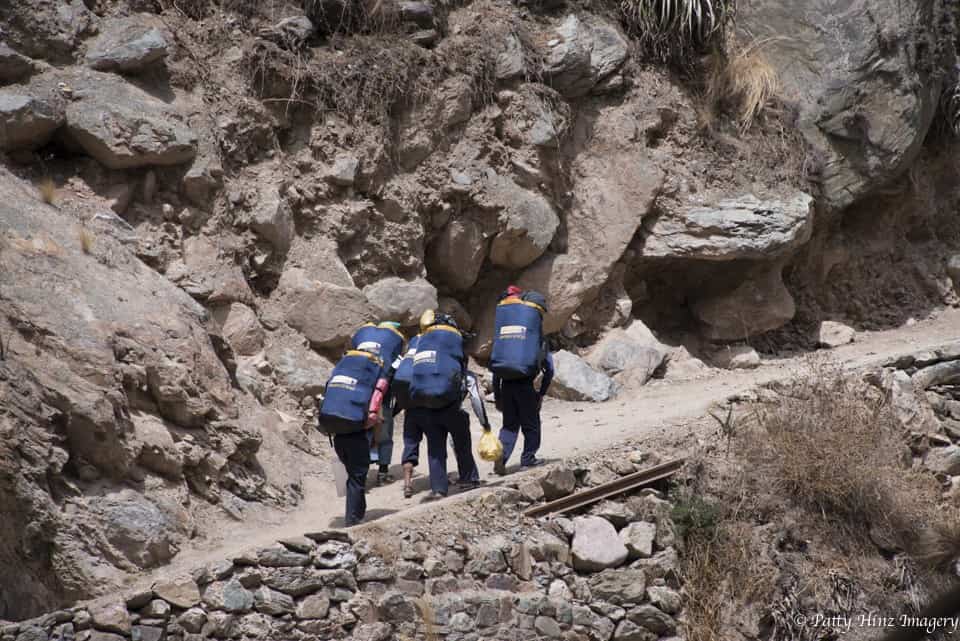
Why do porters work on the Inca Trail?
Remember, the Inca people didn’t have horses, and even when the Spanish arrived with these impressive beasts the Llama was much better suited to the high altitude terrain of the Incan trails. The llama with its large soft padded feet also caused less damage to the stones that make up these trails.
Even in the early days of hiking the Inca trail it was recognised that horses could do damage to the precious Incan masonry, while large groups of llamas might create other issues. (Plus, since the conquest the llama has largely fell out of use amongst the Quechua people of the Andes)
Tourism on the Inca trail became very popular after the defeat of the guerrilla group the Shining Path in the early 1990s, and in 2001, new Inca Trail regulations required permits for trekkers as well as porters; today, 300 porters and guides support 200 tourists daily.
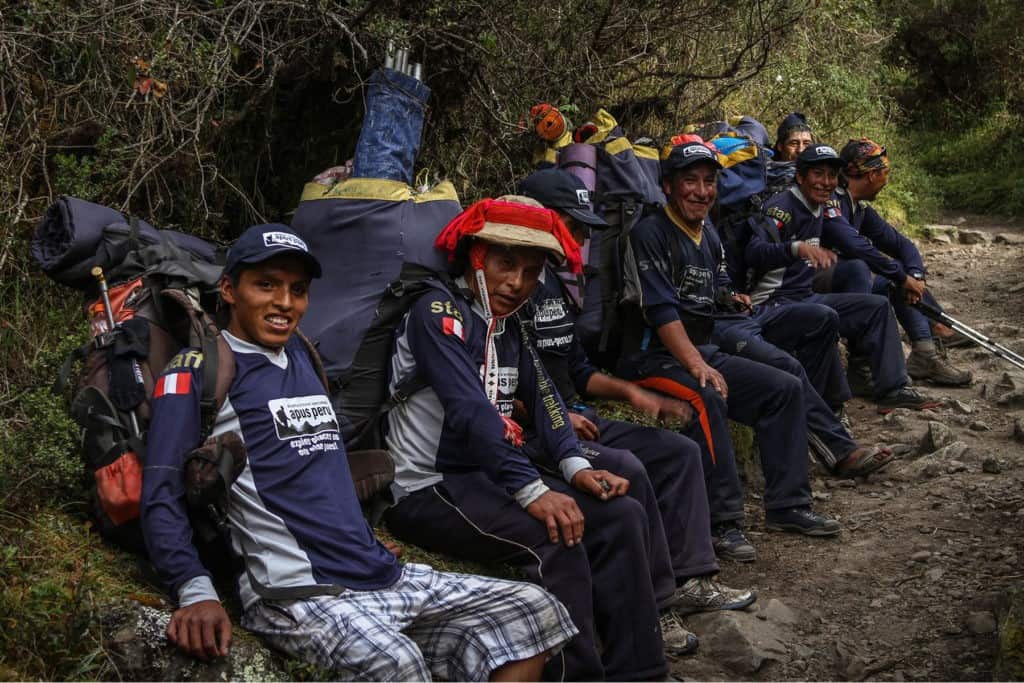
And where to do the porters come from?
The vast majority of the porters who work on the Inca trail are Quechua people from the mountain villages around Ollantaytambo and the Sacred Valley. They live a remote and isolated subsistence lifestyle in the high mountains where they herd llamas, and alpacas, as well as grow crops like potato. Many of their customs are similar to that of the Incas, and they speak Quechua, the language of the Incas. While many people are uncomfortable with other people carrying their gear, it is a good source of employment for local people (mostly men) and the most important thing is to look for a travel agency that treats their porters ethically, and ensures prompt and accurate payment.
The Inca Trail is the only way to walk through the Sun gate
Another interesting Inca trail fact is that the pilgrimage route – the classic Inca trail to Machu Picchu is the only way that you can pass through the Sun Gate, which is known as Inti Punku in Quechua. It is located a significant distance from the Machu Picchu site itself, leading researchers to think it was a strategic entry point. Its name comes from the fact that the sun’s rays pass there during the summer solstices.
On the last day of the 4-day trek, your weary body is rewarded with the incredible sight of Machu Picchu as you walk through Inti Punku, the Sun Gate, at sunrise. This is the ONLY trek that allows you to do this. On other routes, like the Short Inca trail Tour and the 5 day Inca trail you can pass through the Sun Gate at other times of the day – still special, but not a dawn. Check out our guides on the Short Inca Trail and the detailed description of the 5-day Extended Inca Trail if you want to learn more about these exciting options!
Spaces to hike the Inca trail are limited.
Since 2001 the number of places to hike the Inca trail is limited – just 500 people are allowed on the trail every day, and that’s including guides and porters! In pre Covid times the permits were in exceptionally in high demand and sold out as much as 8 months in advance! And with the Inca trail closed in February due to rainy season – as well as rumours that it might one day be closed entirely – it remains a true privilege for anyone who gets to hike its awesome length.
Should you miss out on a permit, don’t worry. No Inca Trail Permits? No Problem! There are plenty of AMAZING alternative treks to Machu Picchu!
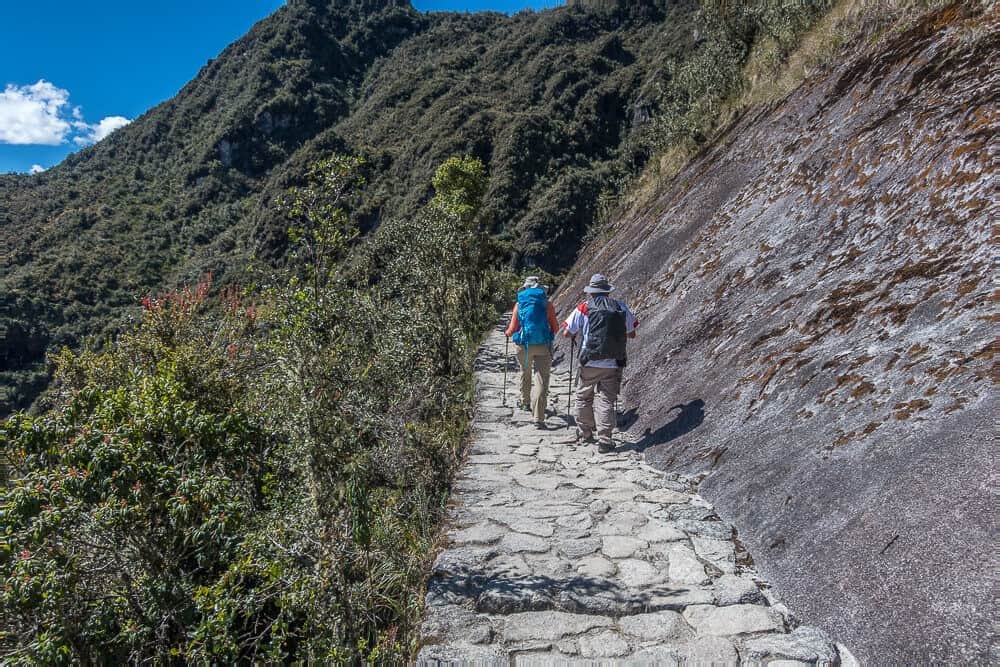
Hike the Inca Trail and you’ll feel AMAZING.
Let’s be frank: the Inca Trail, awesome as it is, is no walk in the park. It is a strenuous, uphill hike, over difficult terrain. And all that at high altitude. The intrepid folk who venture out onto the trail battle sore muscles, burning lungs, and mosquitoes. During the day, the blazing sun threatens to turn you into a puddle of sweat, while at night; freezing temperatures keep you tightly bundled.
But then…walking through the Sun Gate, that first glimpse of Machu Picchu, the sun just beginning to rise over the distant peaks of those glorious, verdant mountains, and you realize: it was all worth it. There’s truly no beating the sense of accomplishment you feel after battling such physical and mental adversity. Knowing that you’ve made a historic journey, and being rewarded by some of the most spectacular views in the world, is a great feeling.
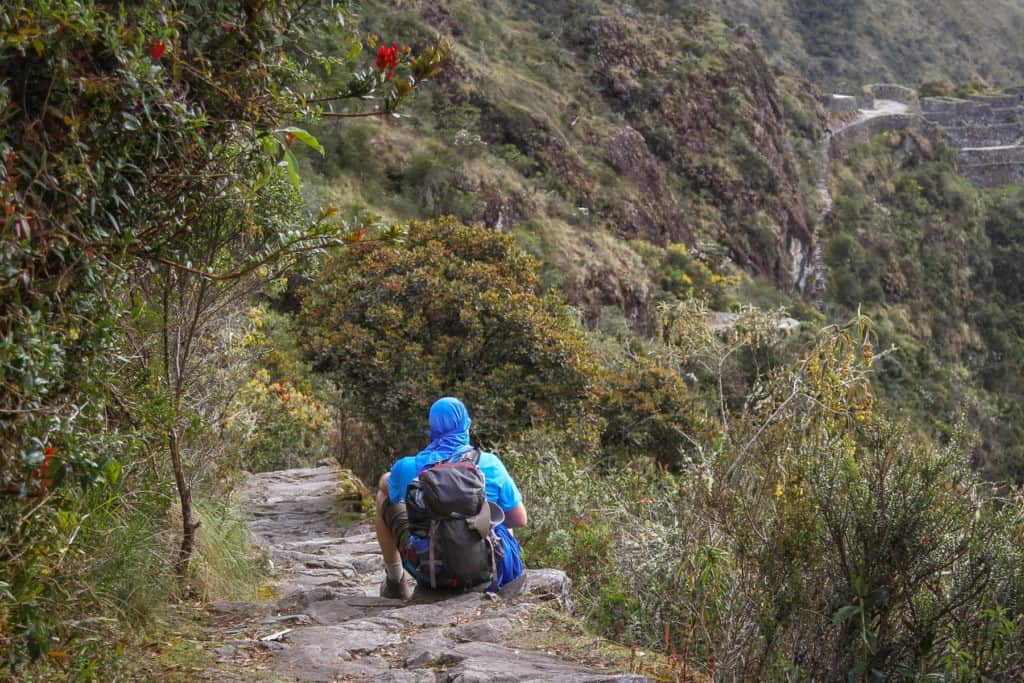
How difficult is the Inca Trail?
For most people, of average fitness, the Inca trail is a moderately difficulty hike. As we have covered above in our facts about the Inca trail, the Classic Inca Trail path is a moderate 43km/ 26 mile hike. The hike typically takes 4 days to complete while reaching a maximum elevation of 13,828 feet (4,215 meters). The trek is challenging, but with a good fitness routine prior to the hike most hikers complete the trek. In our opinion the most difficult thing about the Inca Trail is the stairs.
Locally, there are much tougher trails than the Inca trail – for example, the Choquequirao trek descends and ascends roughly 1000 metres each day. The Ausangate trek, while it doesn’t have the ascents and descents, has three passes over 5000 metres!
Which is harder, the Inca Trail or Kilimanjaro?
Without doubt, the Inca Trail hike to Machu Picchu and the ascent of Mount Kilimanjaro are two of the most well-known hikes of all time – and travellers dream of completing both!
While both of trails are inspiring, beautiful – and difficult – should take some consideration and training before booking your flights!
Most hikers find that Mount Kilimanjaro is a harder hike than the Classic Inca Trail due to the summit of Mount Kilimanjaro standing at 5,895 meters /19,342 feet while the highest point of the Classic Inca Trail trek is not a summit, but a pass of 4215m / 13,828. As Mount Kilimanjaro is a summit, and 1600 metres higher, it can have more ice, and be MUCH colder than on the Inca Trail and can reach below 20° F (-7°C).
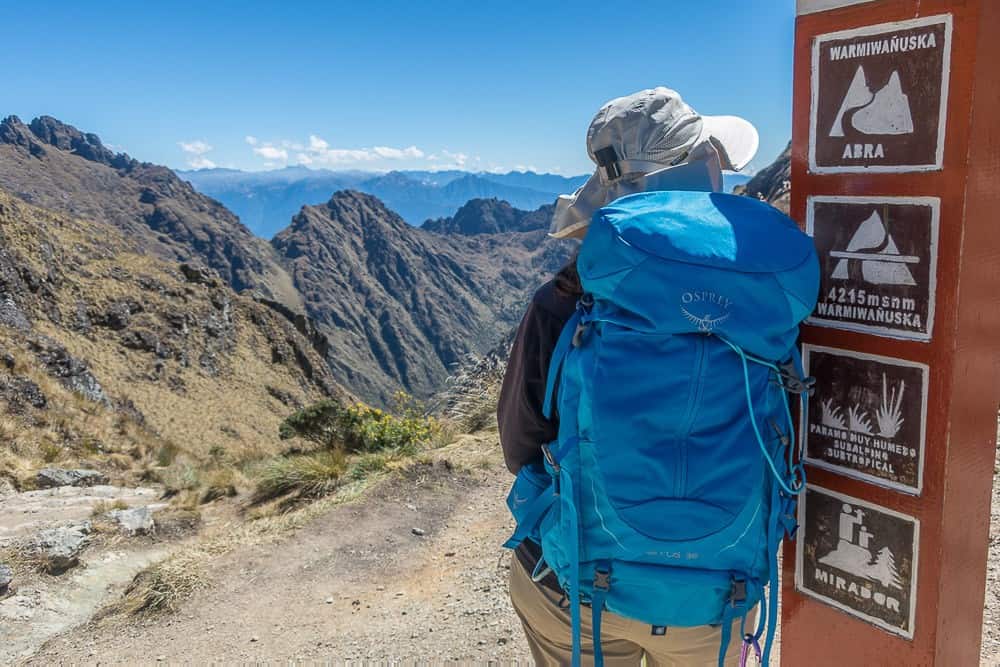
Can children hike the Inca Trail?
Yes, children can hike the Inca trail to Machu Picchu! There is no official minimum age for trekking the Inca Trail, but at Apus Peru we recommend an age of 10-12 years, and more importantly that the children have certain attributes. This would include resilience; experience not only doing long distance multi day hiking, but camping out at night. Like with adults, the Inca Trail is not something that should be taken lightly, and our general advice for kids is – the older and more experienced you are, the easier it should be!
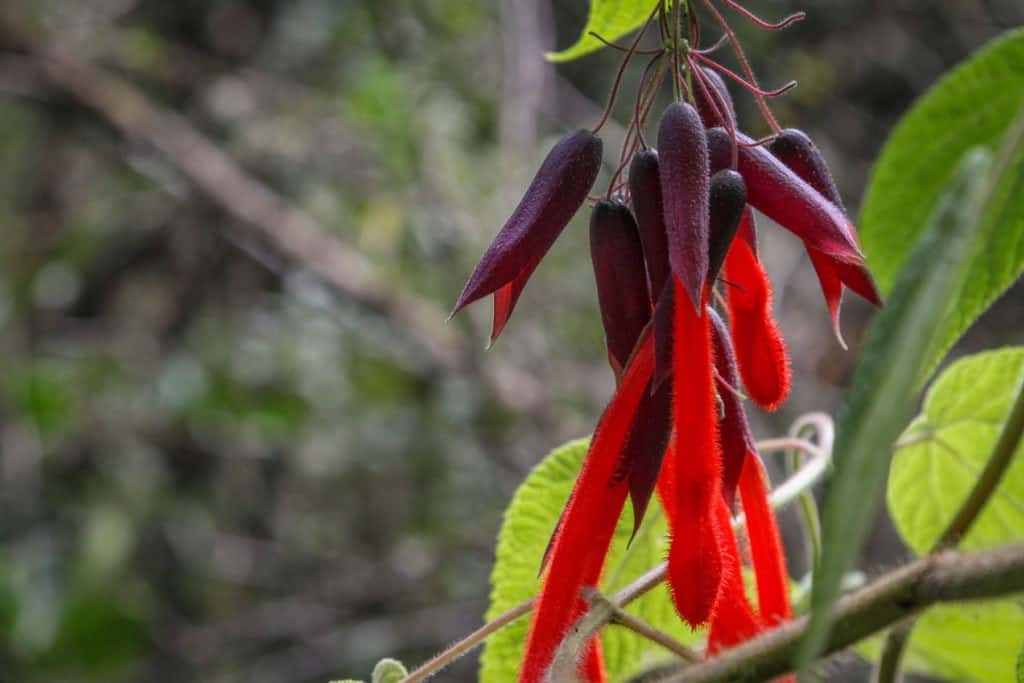
Did we mention the Inca trail is beautiful?
Simply put, the Inca Trail is stunning. Every day, there is a wonderful array of archaeological sites on which to feast your eyes, not to mention the breathtaking Andean scenery that surrounds you every step of the way. From snow-capped mountains and alpine tundra to lush cloud forest and sub-tropical Andean jungle, the awesome Inca Trail provides an unparalleled journey through a series of micro-climates.
Sign up for our Inca Trail newsletter and get all the info!
Thanks for joining us for these amazing Inca Trail Facts!
Join today’s Classic 4-day Inca Trail trek and you will retrace the steps of American explorer Hiram Bingham. The journey is said to be modelled on Bingham’s 1911 hike that first led to Machu Picchu’s momentous rediscovery. A hike along the Inca Trail is like a journey through time! How awesome is that? You can also check out our Insider’s Guide to the Inca Trail Hike for more details and tips!
Apus Peru offers loads of awesome Inca Trail experiences. Permits sell out quickly so book early and make this the year YOU join the ranks of the lucky few who get to experience this once-in-a-lifetime journey!

